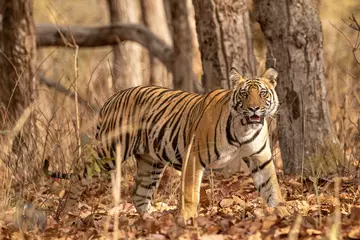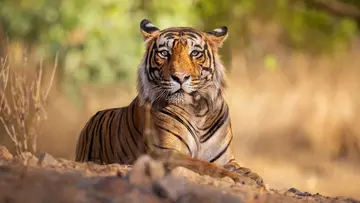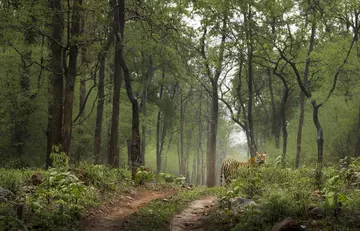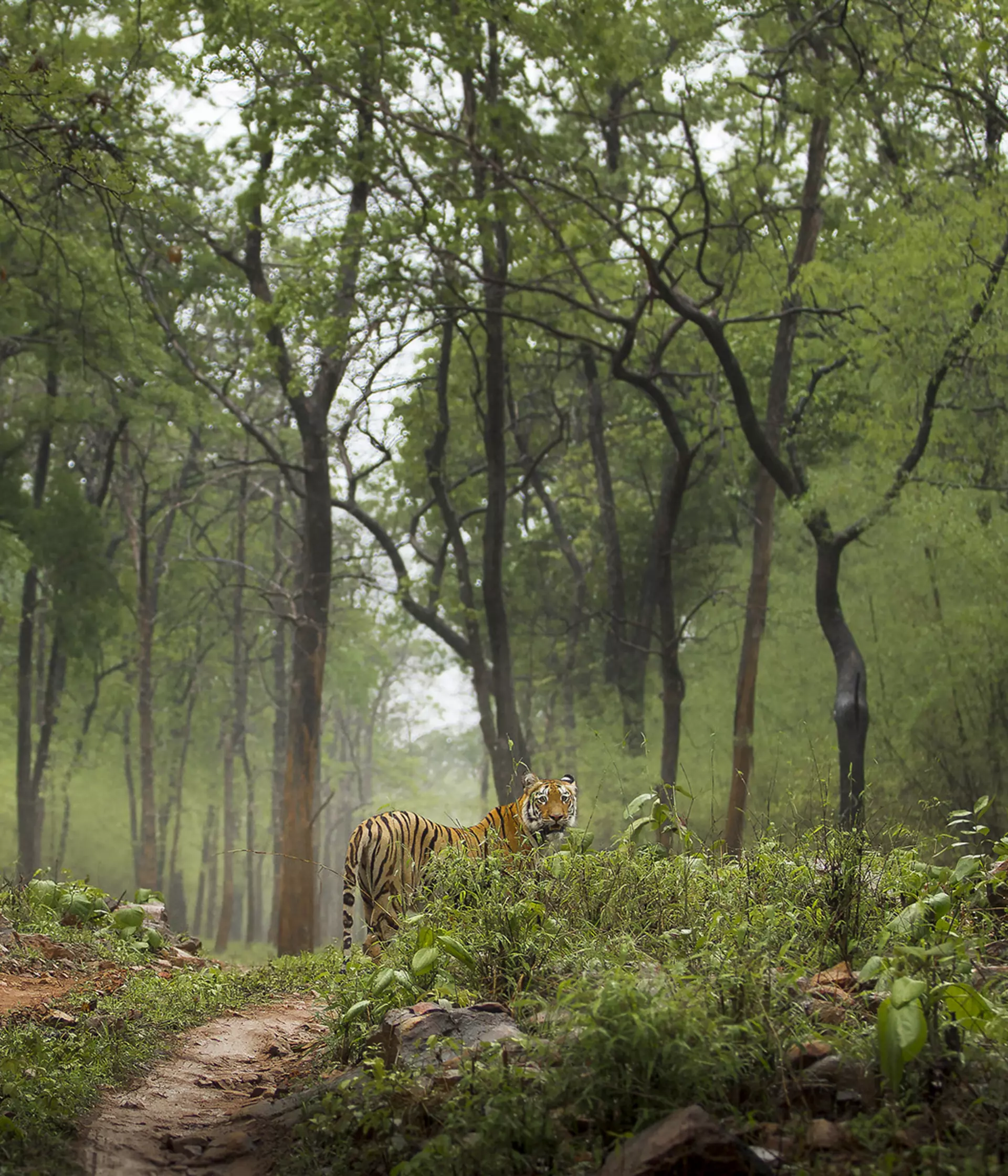
Endangered Bengal tiger numbers in India have risen to record high.
Record-breaking numbers of Bengal tigers in India have been announced by the country’s latest tiger census with over 3100 tigers now in the country – double the number living there less than 20 years ago.
The recovery of the Bengal tiger population is one of the most successful wildlife conservation stories – a story made possible by the collaborative work led by the Indian government’s Project Tiger campaign and supported by conservation charities including ZSL.

Why are Bengal tigers Endangered?
Bengal tigers once roamed across the entirety of the Indian subcontinent, but a combination of poaching and habitat loss led to their numbers dramatically declining during the 20th century. It’s estimated that in 1900 around 100,000 tigers lived in India, but by 1972, there were only 1827 left in the country.
Many tigers have been lost to poaching for their teeth, claws, skin and bones, while over-hunting of prey species made it harder for the remaining tigers to survive. At the same time, human-centred development initiatives promoted following India’s independence in 1947, such as roads and railways, began to cut through grassland habitats and trees were cut down to make way for crops and grazing grounds, the land across which tigers once roamed became more and more fragmentated.
As tigers struggle to survive in shrinking homes, there is greater risk of conflict between them and local people. Many people living alongside tiger habitats are reliant on the forests for fuel, timber and livestock fodder, leaving them more vulnerable to interactions with tigers.

Tiger Conservation
Bengal tigers have had a challenging history, but due to vital conservation work, the tables are turning for this iconic cat.
The increase in tiger numbers reported by the Indian government will have wide-reaching impact. These big cats are umbrella species for conservation, playing an essential role in maintaining the health of the ecosystems in which they live - by protecting them and their habitats, many other species can thrive.
While increasing tiger numbers are a conservation win, it’s important to recognise that the work doesn’t end with simply creating large tiger populations – it’s vital to create a world that these tigers can live in. Increased competition for space in shrunken forests pushes tigers beyond the boundaries of national reserves and sanctuaries into human dominated landscapes. As tigers venture closer to human populations in search of food, the chance of conflict between them and people increases. Putting communities at the centre of tiger conservation efforts is essential to building a future where wildlife can live harmoniously alongside people.
We have been working in India to rewrite the future of Bengal tigers through our work in the Terai Arc Landscape, an area of terrain that runs through Nepal and northern India in the shadow of the snow-capped Himalayas. Since 2016, we’ve worked with the Wildlife Institute of India in Nanduar Wildlife Sanctuary – a forested zone that provides a home to tigers, Asian elephants and the fruit-eating sloth bear – and this record-breaking tiger census shows that we’ve helped to triple the sanctuary’s tiger population in just eight years.
Alongside working to protect tiger habitats, fostering positive tiger-human relations is key to our work in the sanctuary. From helping communities to directly benefit from conservation efforts to promoting relief funds to support people when they lose livestock to tigers, we’re helping people live alongside these Endangered animals.
These efforts are part of our wider conservation work in five different protected areas and sanctuaries across the Indian and Nepalese border, working to protect and recover tigers as part of IUCN’s Integrated Tiger Habitat Conservation Programme funded by the German Cooperation via KfW Development Bank. Through this programme we’re not only working with local communities but also helping improve habitat management and tiger monitoring through collaboration between different sites – essential for protecting wide-ranging species such as tigers which move between protected areas.

A Future for Bengal Tigers
There is still much work to be done to bring Bengal tiger populations close to their historic numbers, but the success of India’s growing population – coming shortly after Nepal announced the doubling of their own tiger population – shows how these vital conservation efforts can make a tangible difference to restoring the natural world.
Collaboration between conservationists, local communities, authorities, stakeholders and governments will all be essential to continuing this work.
The Integrated Tiger Habitat Conservation Programme (ITHCP) is an initiative implemented by the International Union for Conservation of Nature (IUCN) and funded by German Cooperation via KfW Development Bank, which contributes to the global effort to double tiger numbers in the wild by 2022 by supporting landscape level conservation work benefiting species, communities and habitats. Coordinated actions enhancing conservation skills, developing new livelihoods and improving governance and infrastructure are delivering results in terms of better protected tigers across these landscapes.
Climate change and human activity have pushed our precious planet to its limit, causing the devastating loss of so many habitats and species. From lab to field, hands on and behind the scenes, we’re leading the future of conservation, shaping agendas and influencing change to support better life, health and living for people and wildlife.
